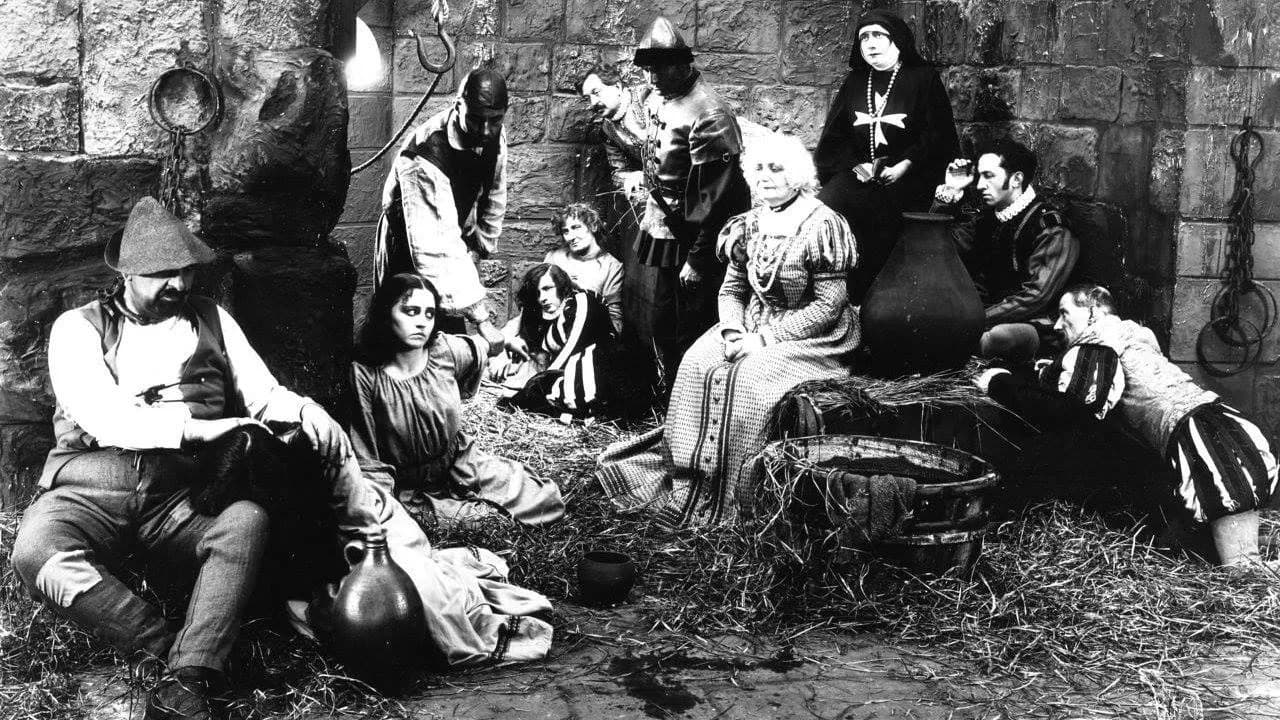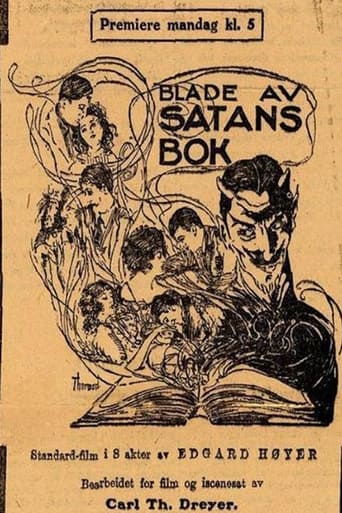

This movie...makes God out to be an obstinate Meany and Satan out to be a sympathetic character. That's not quite how it really is. I gave this movie a "1" because of that teaching. Anyone who believes that God is an obstinate Meany and Satan is a sympathetic character is in real trouble. There are some interesting elements to this film, but the teaching overshadows them. Yes, it deals with the Finnish Revolution, which I was not aware of until I saw this film. One earlier segment that I found interesting was around the time of Marie Antionette's execution. It refers to a her last letter, as if everyone should be familiar with it. I guess audiences of that time period might have been, but that's the first time I heard of it, too. Then there's Dryer. He's been made out to be a genius, but he comes across to me as an odd little man with funny ideas. Apparently, he thought God was an obstinate Meany and Satan was a sympathetic character. (I'll be he doesn't anymore!) If you must see a Dryer silent film, see The Parson's Widow (1920). Of the Dryer silent movies I've seen, it's the best of the lot.
... View More"Leaves Out of the Book of Satan" is a complex motion picture for someone who had only directed one film, but it is certainly a setback in Carl Theodor Dreyer's growth. Compared to "The President", a small but vivid work, this long film is a pompous exercise that in the end distracts from the best efforts in his filmography. Much has been said about the influence of D.W. Griffith's "Intolerance" on this film, but little is told about the Danish long tradition of feature-length films and how these probably influenced the American filmmaker. So it is a two-fold affair that adds very little to the appreciation of "Leaves Out of the Book of Satan". Here Dreyer deals with Evil as a decisive factor in the evolution of mankind, in a sort of mystic treatise for which he managed a big budget, several casts and four stories. Helse Nilssen plays Satan very well, first as a Pharisee inducing Judas Iscariot to betray Jesus, then as an Inquisitor during the imperial days of Spain, followed by the impersonation of a fanatic Jacobin during French revolution, and finally, in (then) present day, as a Bolshevik monk (resembling Rasputin) during Russian invasion of Finland. The first two parts and the conclusion last around 30 minutes each, but the French episode is long, and Satan enters late in the story. Unfortunately I share the opinion that this film is of utmost interest only to Dreyer's completists.
... View MoreThis pretentious historical drama of Satan's part in the treason of Jesus and the horrors of the Spanish inquisition, the French revolution and the Finnish civil war is stylistically a curious move backwards for Dreyer and the Danish film industry. After the technical innovations by director Benjamin Christensen, already in Det hemmelighedsfulde X (1914), as well as in Dreyers own first feature, Præsidenten (1919), which pioneered the use of both natural lightning and chiaroscuro effects that looked forwards to German expressionism, Blade af Satans bog returns to the all too brightly lit costume drama which dominated much of the early cinema. This means that even windowless rooms with only a few candles burning is lit up like it was broad daylight all over, eventually killing any sense of sinister atmosphere that the plots here surely calls for. Outside night scenes are likewise often shot in daylight, probably awaiting blue tinting. What could be genuinely scary with more imaginative lightning and a more cinematic style, remain lifeless tableaux. There are a few scenes that uses shadows to great effect, but in a film that is 157 minutes long the overall impact is rather dull, despite the excellent new, but untinted print provided on the DVD by the Danish Film Institute from a duplicate negative.Despite these shortcomings, there are many interesting touches for fans of Dreyer's more acclaimed work. For instance the torture scenes in Spain that anticipates the ones in Jeanne d 'Arc, and the many carefully arranged portrait pans of elders that is used again (more sophistically) in Ordet. In the Finnish episode we also get some very dramatic scenes that combines fast action with small details in close ups, expertly framed and imaginatively put together by cross cutting. After all the static of the previous episodes, the swiftness in Finland comes as a blessing and a fitting climax bringing the history lesson up to date. That is, if you don't mind the white propaganda - proves you don't have to be a bolshie to see red. Thematically, there is also the interesting touch that Dreyer shows his obsession with how personal love affairs often dominate the course of historical events. If someone is tortured or executed, you bet it is because she failed to satisfy her jealous lover, who then turns out to make faith work fatally against her. The white girl loaded with hand grenades that captures two reds just when they were about to execute a brave white fighter, is of course also on a personal revenge trip, even if it is all for Finland, of course. There are enough of such situations here for more than a few topical theses, but I'll leave it at that. Anyone interested in Dreyer should see this anyway. Oh, I forgot to mention Intolerance? But then it turns out, according to Casper Tybjerg, that the manuscript for Blade af Satans bog was written in 1913 (Oh yeah? I hear you say, but the Finnish episode is set in 1918? Go figure), and probably inspired by the Italian film Satanas by Luigi Maggi (1912), which (also probably?) inspired Intolerance. But Dreyer has confirmed that the close up of Siri's face in the Finnish suicide scene was directly inspired by the close up of Lilian Gish in Griffith's court scene. So there.
... View MoreCarl Theodor Dreyer is the greatest filmmaker to come out of Denmark, but not here. This was early in his career, so I suppose it's excusable. Dreyer connects four stories from Christ to modern times just as D.W. Griffith did in "Intolerance" (1916), which obviously was the inspiration for this film. Story-wise, the four periods are more connected in this film, with Satan binding them; there's only the theme of intolerance throughout the ages and all that for "Intolerance". It's the radical editing in "Intolerance", however, that links its periods on much higher levels, ending in an exciting, emotional and astonishing climax. Dreyer doesn't get enough sympathy out of Satan to make up for that.The cinematography and film-making here are what one might expect from the era--prosaic, indeed. There are a few close-ups and some panning for practical purposes. A few shots were okay (a shot a la Leonardo da Vinci's The Last Supper, a silhouette of a guillotine, POV shots out a window, some of the dolly movements inside), but most of it's basic--boring by today's standards. There's lots of masking, which Griffith and Bitzer are well known for, with opening iris shots and such, but there's probably too much of that here, and it's certainly not enough to make the film visually appealing. Satan doomed to continue his evil deeds during the life of Christ, the Spanish Inquisition, the French Revolution and the Russian occupation of Finland just isn't interesting enough of a story by itself to make the two hours worth it.
... View More